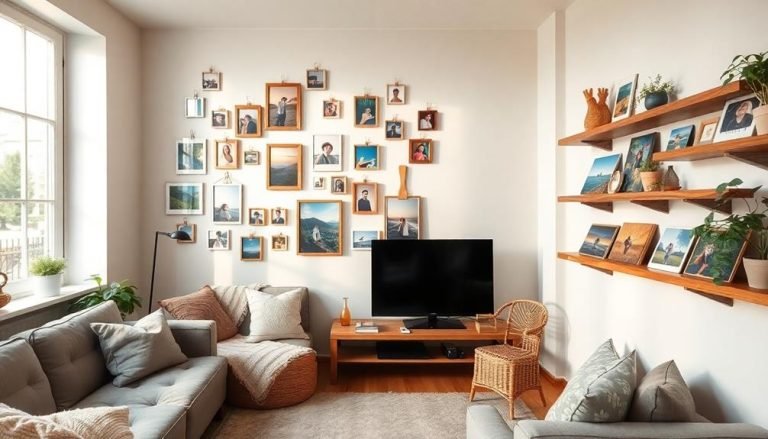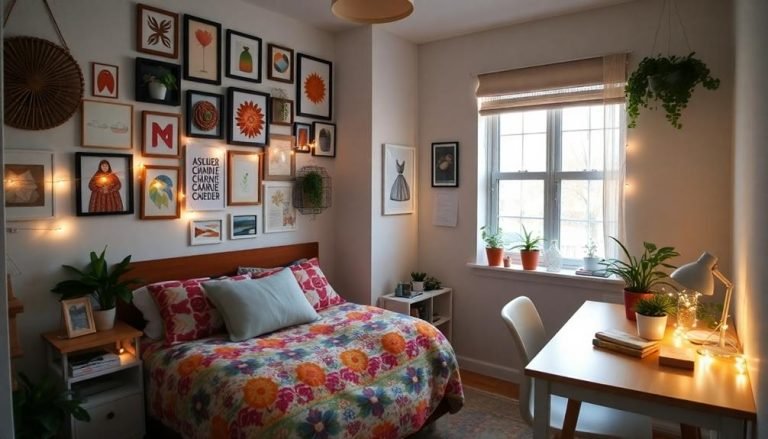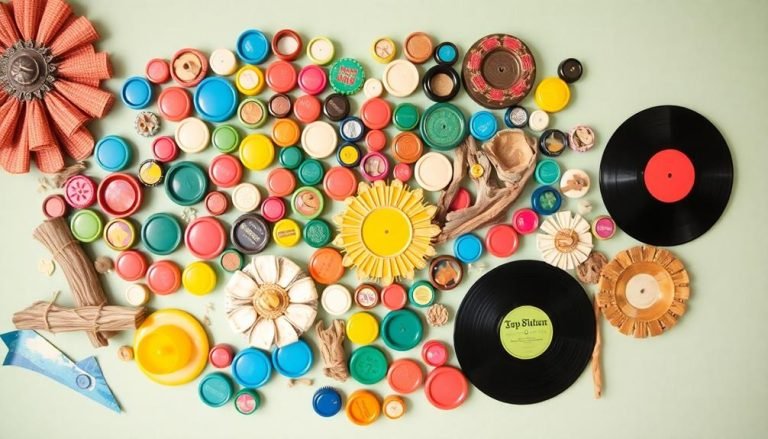Imagine stepping into a room where a tapestry transforms the space, much like a well-chosen piece of music elevates a moment. You might wonder what steps you need to take to create such an impactful piece of wall art. It starts with selecting the right materials and a design that speaks to you, but there's much more to contemplate. As you think about how to prepare your base and weave your story into the fabric, you'll find that each choice shapes the final result in ways you might not expect.
Key Elements
- Select your fabric based on aesthetic and functional needs, considering options like cotton or eco-friendly materials for sustainability.
- Choose a design theme that resonates emotionally, incorporating seasonal colors and patterns to enhance the tapestry's visual appeal.
- Prepare a sturdy base by cutting high-quality fabric to size and securing it to a frame to prevent distortion during weaving.
- Utilize various weaving techniques, such as plain, twill, or rya weave, to create texture and complexity in your tapestry design.
- Hang your tapestry using a wooden dowel or decorative rod, ensuring it's positioned at eye level for optimal viewing and impact.
Selecting Your Materials
When it comes to selecting your materials for tapestry wall art, you'll want to evaluate both the aesthetic and functional aspects. The choice of fabric is essential; cotton, wool, and silk each offer unique textures and appearances, influencing not only the visual impact but also the durability and ease of care.
For instance, cotton is often more affordable and easy to clean, making it a practical choice for everyday use, while silk provides a luxurious sheen that can elevate the overall ambiance of a room. You might also consider sourcing materials from thrift stores, as they often have unique fabric options that can enhance your tapestry while being cost-effective and sustainable unique decor items.
Additionally, consider the weight of the material. Heavier fabrics hang beautifully and convey a sense of richness, while lighter options may be more suitable for casual settings or smaller spaces.
You'll also want to think about the thread quality, as higher thread counts typically lead to more intricate designs and greater longevity.
Don't forget to explore eco-friendly materials if sustainability is important to you; organic cotton and recycled fibers can provide a sense of belonging to environmentally-conscious communities.
Ultimately, your choice of materials will reflect your personal style and values, creating a tapestry that resonates with both you and your space.
Choosing a Design
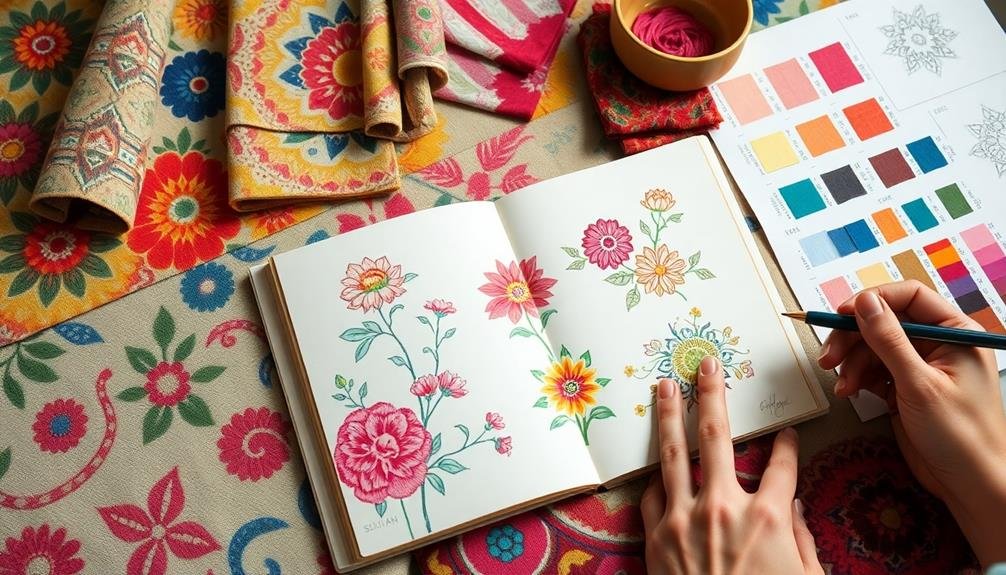
Selecting a design for your tapestry wall art can transform your space and reflect your personality. When you choose a design, consider how it resonates with your emotions and the atmosphere you want to create.
Look for themes that speak to you, whether they're abstract, nature-inspired, or even cultural motifs. To enhance the seasonal feel of your space, think about incorporating warm colors and textures, similar to seasonal color palettes and accents that evoke autumn vibes.
Here are some ideas to inspire your decision-making:
- Nature Scenes: Bring the outdoors inside with landscapes, floral patterns, or animal designs, creating a serene vibe.
- Geometric Patterns: Opt for modern and minimalist aesthetics with geometric shapes that add a contemporary touch to your decor.
- Cultural Symbols: Explore designs that celebrate your heritage or interests, fostering a connection to your roots and community.
- Inspirational Quotes: Integrate words that motivate or uplift you, making your tapestry not just art but a daily reminder of your values.
- Personalized Artwork: Consider commissioning a custom piece that embodies your unique story or experiences, ensuring it's truly one-of-a-kind.
Preparing the Base
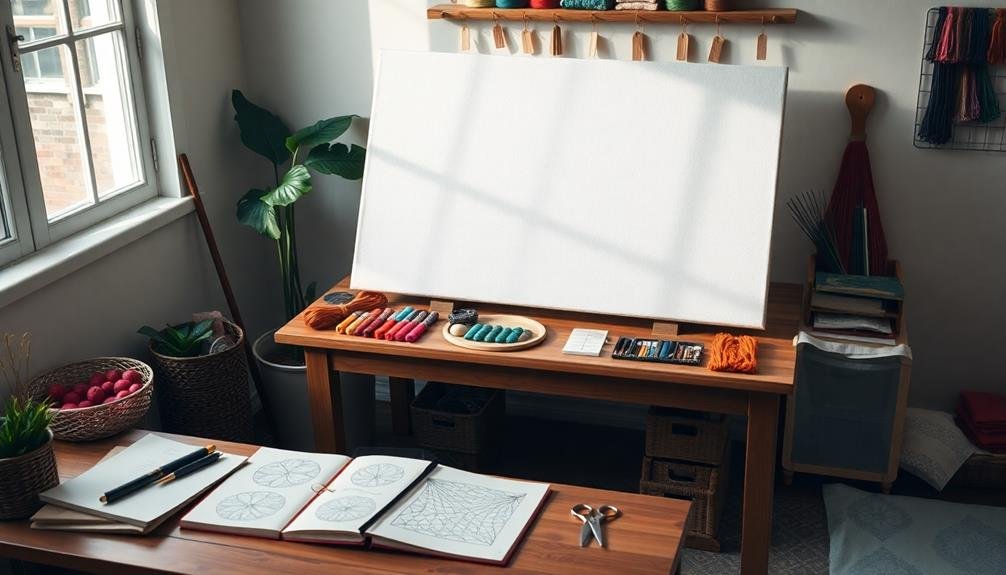
Preparing the base for your tapestry wall art is fundamental to ensuring it hangs beautifully and maintains its shape over time. Start by selecting a sturdy frame or support, as this will provide the necessary structure to hold your woven masterpiece. You might choose a wooden frame, which offers durability, or a simple dowel rod for a more minimalist aesthetic.
Next, consider the fabric you'll use as your foundation. High-quality cotton or linen is often preferred, as these materials not only offer a smooth surface for weaving but also resist stretching and sagging. It's essential to cut your fabric to the desired size, allowing for extra margins that will later be folded and secured.
Once the fabric is prepared, you can attach it to your chosen frame using staples or adhesive, ensuring it's taut without being overly stretched. This step is critical, as a well-prepared base allows your creativity to flourish without the worry of distortion.
Weaving Techniques
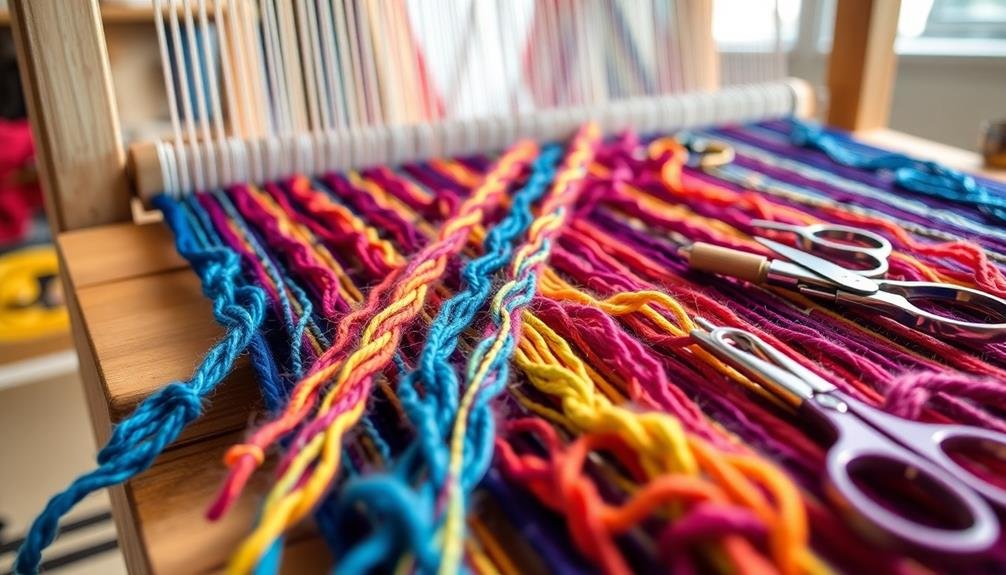
How do you bring your tapestry to life? By employing various weaving techniques, you can create intricate designs that resonate with your artistic vision and evoke a sense of belonging.
Each method you choose contributes to the texture and depth of your tapestry, allowing you to express your individuality. Here are some essential techniques to contemplate:
- Plain Weave: The simplest technique, alternating threads over and under, creates a flat surface.
- Twill Weave: This technique allows diagonal patterns, adding complexity and movement to your artwork.
- Soumak Weave: By wrapping yarn around the warp threads, you achieve a raised design, perfect for creating outlines or borders.
- Rya Weave: Incorporating longer loops, this technique gives a plush, textured effect, enhancing the tactile quality of your tapestry.
- Inlay Weave: For intricate designs, this method involves weaving a contrasting color within the base weave, allowing you to create detailed motifs.
Exploring these techniques not only enhances your skill set but also deepens your connection to the tapestry-making community, where shared experiences and techniques can foster a powerful sense of belonging.
Hanging Your Tapestry
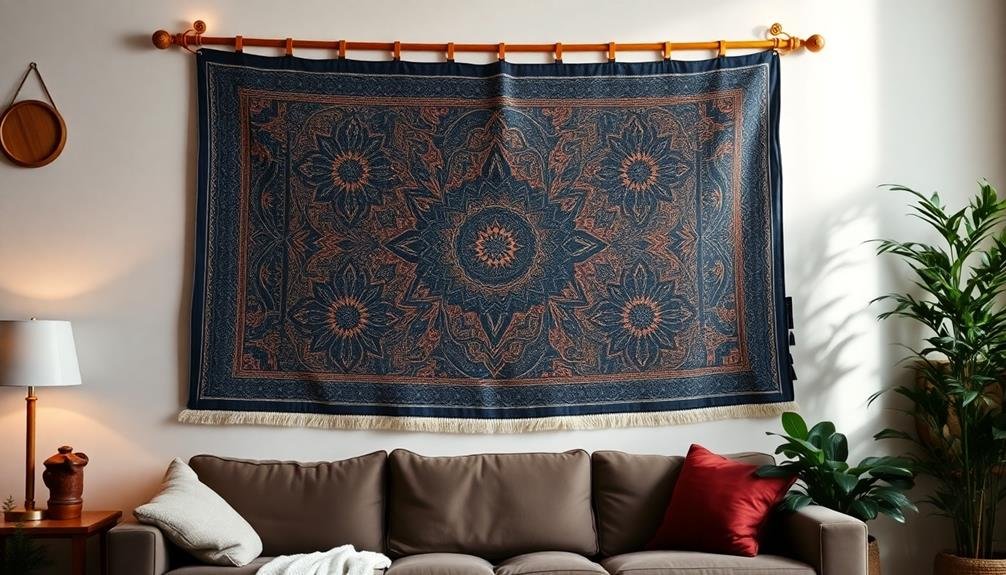
Once you've mastered the weaving techniques that bring your tapestry to life, the next step is showcasing your creation. Hanging your tapestry properly not only enhances its visual appeal but also allows it to become a focal point in your space, inviting admiration and sparking conversations.
Start by choosing the right location; ideally, select a wall that receives sufficient light without direct sunlight, which could fade its colors over time.
For an elegant display, consider using a wooden dowel or a decorative rod. Slide the top edge of your tapestry onto the dowel, securing it with small fabric loops or pins, ensuring it hangs straight and flat.
Alternatively, you can use clips or hooks, which provide a more casual look while allowing for easy adjustments.
When hanging, position your tapestry at eye level for maximum impact, and consider pairing it with complementary decor, such as framed artwork or plants, to create a cohesive aesthetic.
This thoughtful arrangement transforms your wall into a vibrant gallery, making your tapestry not just a piece of art, but a cherished element of your home that reflects your unique style and sense of belonging.
Frequently Asked Questions
How Long Does It Take to Complete a Tapestry?
It usually takes anywhere from a few weeks to several months to complete a tapestry, depending on its size and complexity. You'll find the process rewarding, transforming your space with your unique creation.
What Tools Are Necessary for Tapestry Weaving?
You might think tapestry weaving's complicated, but it's not! You'll need a loom, yarn, scissors, and a tapestry needle. With these tools, you can create beautiful art that connects you to a vibrant community.
Can I Use Recycled Materials for My Tapestry?
Absolutely, you can use recycled materials for your tapestry! It adds unique character and tells a story. Gather fabric scraps, old clothes, or even paper, and let your creativity shine through in your artwork!
How Do I Maintain and Clean My Tapestry?
To maintain and clean your tapestry, gently vacuum it using a brush attachment. For stains, spot-clean with a damp cloth and mild soap. Always hang it away from direct sunlight to preserve colors and texture.
Are There Any Safety Precautions to Consider While Weaving?
When weaving, you can't ignore safety. Always secure your workspace, use sharp tools with care, and keep children or pets away. Taking these precautions guarantees a safe, enjoyable experience, letting you focus on your creativity.
Whats Next
Creating a tapestry for wall art is not merely a craft; it's an intersection of creativity and technique that transforms your space. By meticulously selecting materials, thoughtfully designing your piece, and employing various weaving techniques, you can produce a stunning visual centerpiece. As you hang your tapestry at eye level, consider the serendipity of how your chosen colors and themes resonate with your environment, ultimately crafting a harmonious and inviting atmosphere that reflects your personal aesthetic.


